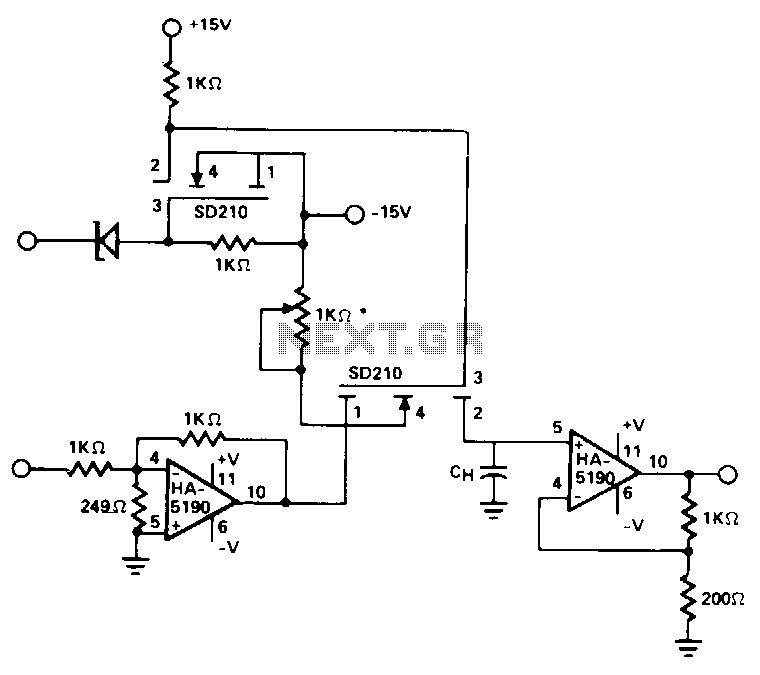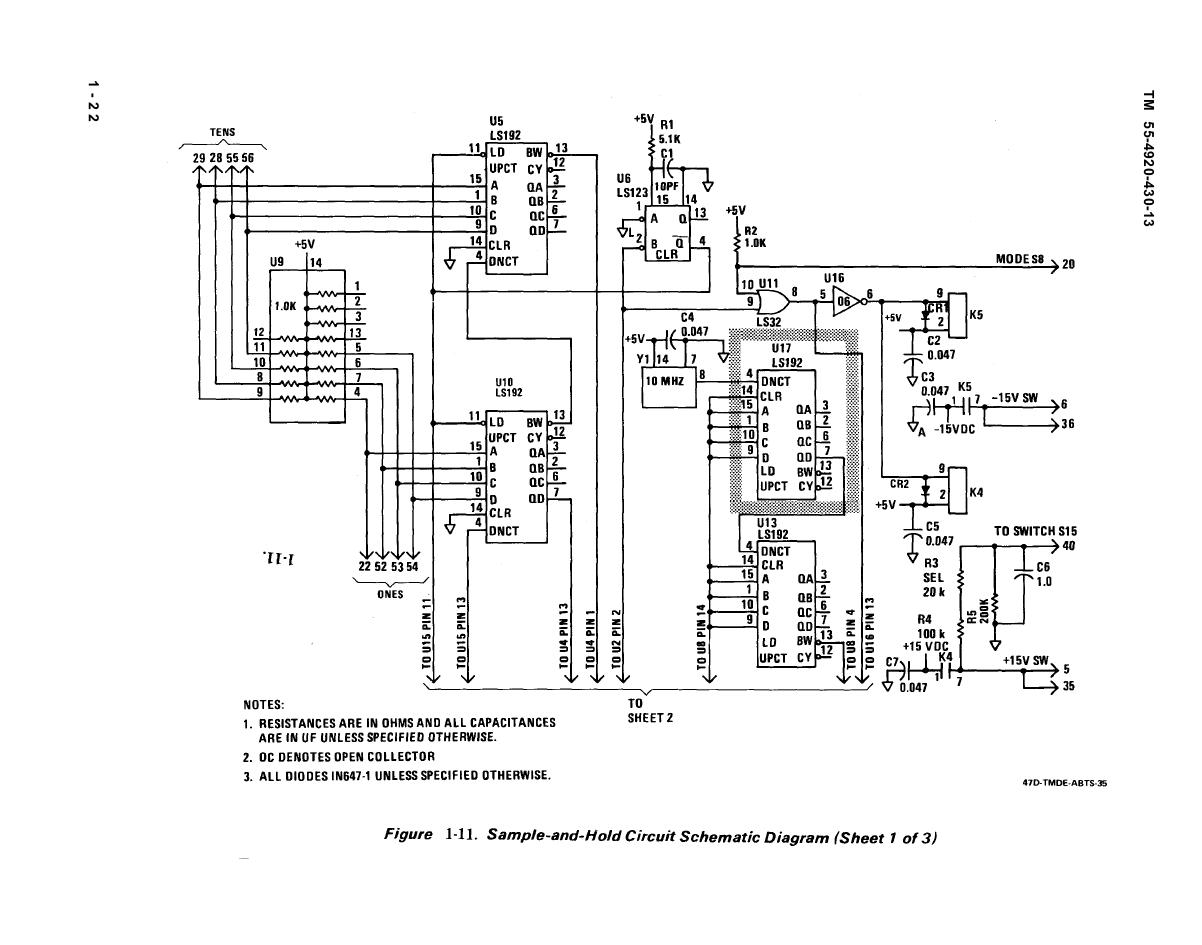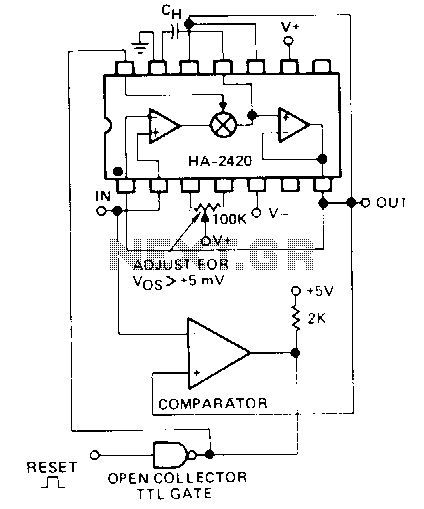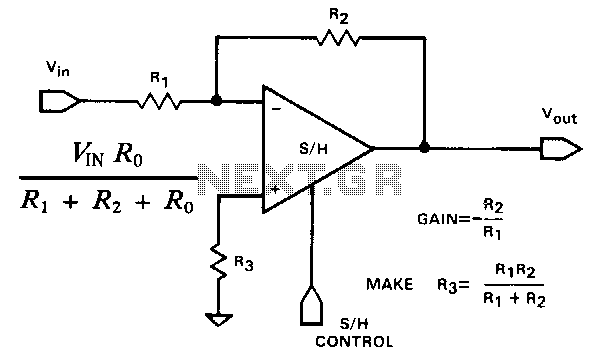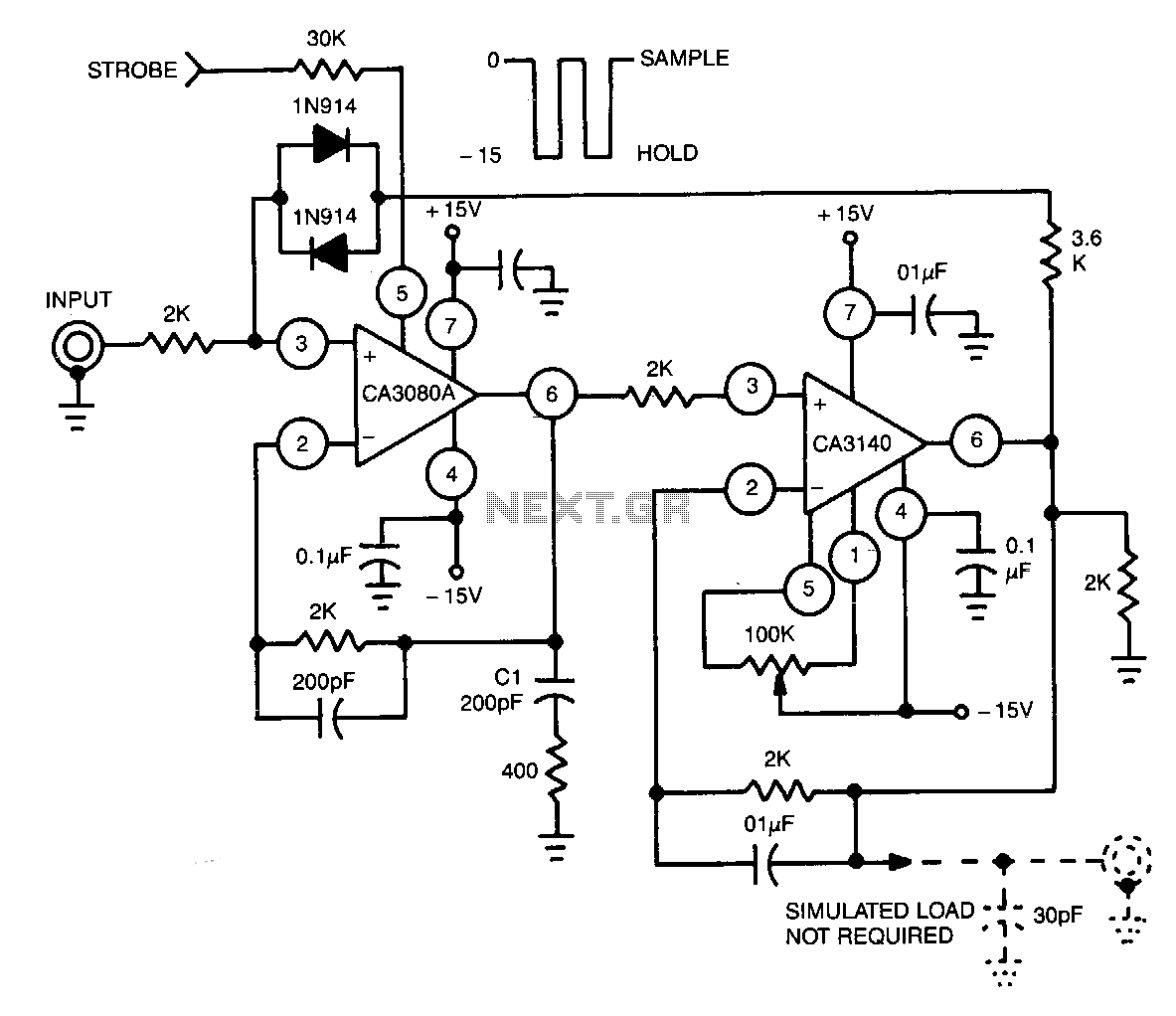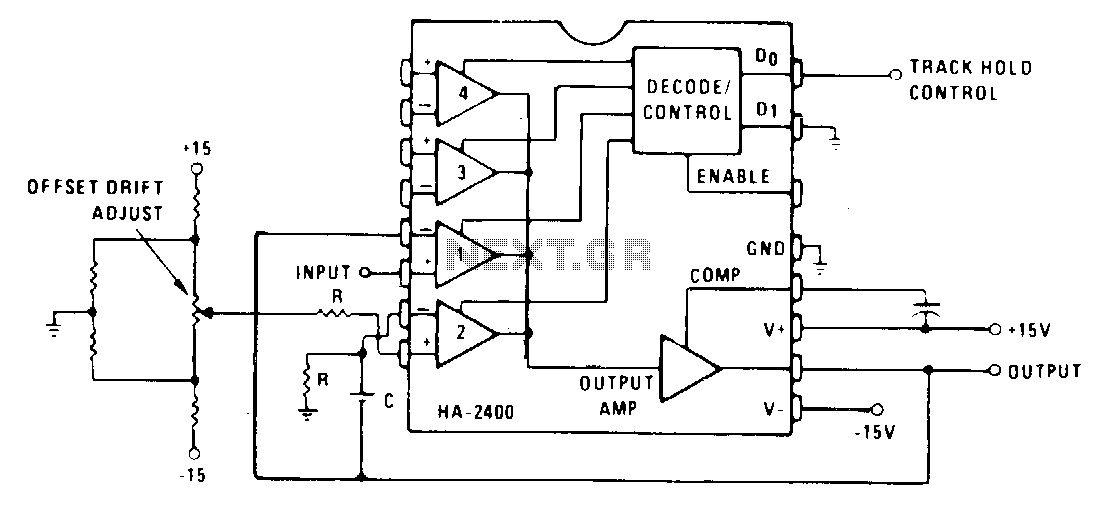
Sample-and-hold
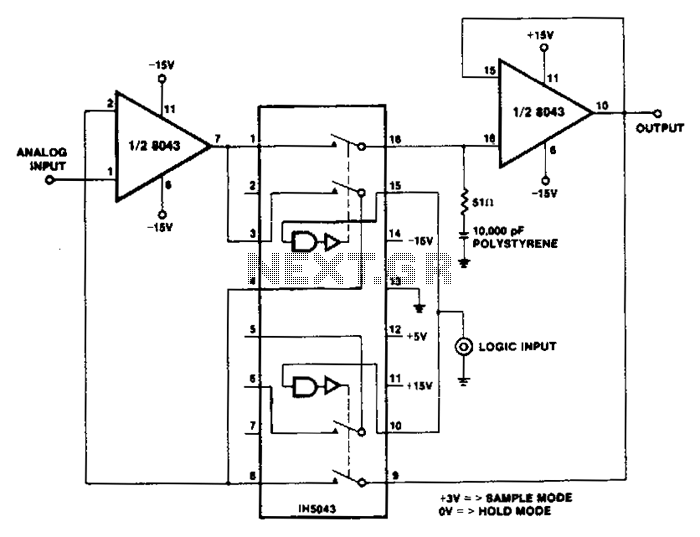
Two significant characteristics of the 8043 are utilized effectively in this circuit. The low input bias currents result in slow output decay rates (droop) during the hold mode, while the high slew rate of 6 V/µs enhances the tracking speed and response time of the circuit. The upper waveform indicates the input at 10 V/div, while the lower waveform represents the output at 5 V/div. The logic input is high. The center waveform shows the analog input, a ramp moving at approximately 67 V/ms, while the lower waveform depicts the logic input to the sample-and-hold circuit; a logic high initiates the sample mode. The upper waveform is the output, offset by about one scope division (2 V) from the input to prevent overlapping traces. The hold mode, during which the output remains constant, is distinctly observable. At the beginning of a sample period, the output takes about 8 µs to catch up with the input, after which it tracks until the next hold period.
The circuit leverages the 8043's low input bias current to minimize the droop effect during the hold phase, ensuring that the output signal remains stable for a significant duration. This is particularly important in applications where maintaining signal integrity during hold periods is critical. The high slew rate of 6 V/µs allows the circuit to respond quickly to changes in the analog input, which is essential for accurately capturing fast signal variations.
In this configuration, the analog input is presented as a ramp signal with a slope of approximately 67 V/ms, which is a common waveform used in testing and calibration scenarios. The sample-and-hold function is triggered by a high logic input, which activates the sampling process. During the sample phase, the output closely follows the input waveform, ensuring that the signal is accurately represented.
The output waveform is intentionally offset by 2 V to provide clear visibility of the relationship between the input and output signals on an oscilloscope. This offset is crucial for preventing trace overlap, which could obscure important details in the waveform analysis. The hold mode is characterized by a constant output that remains unchanged until the next sampling event, allowing for precise measurement and analysis of the input signal.
The time taken for the output to catch up with the input at the beginning of each sample period is approximately 8 µs, which indicates the response time of the circuit. After this initial catch-up period, the output accurately tracks the input signal until the next hold command is issued. This behavior is essential for applications that require precise timing and signal fidelity in analog-to-digital conversion processes or other signal processing tasks.Two important properties of the 8043 are used to advantage in this circuit. The low input bias currents give rise to slow output decay rates (droop) in the hold mode, while the high slew rate at 6 V/p,s improves the tracking speed and the response time of the circuit. The upper waveform is the input 10 V/div, the lower waveform the output 5 V /div. The logic input is high. The center waveform is the analog input, a ramp moving at about 67 V/ms, the lower waveform is the logic input to the sample-and-hold; a logic 1 initiates the sample mode. The upper waveform is the output, displaced by about one scope division 2 V from the input to avoid superimposing traces.
The hold mode, during which the output remains constant, is clearly visible. At the beginning of a sample period, the output takes about 8 p,s to catch up with the input, after which it tracks, until the next hold period.
The circuit leverages the 8043's low input bias current to minimize the droop effect during the hold phase, ensuring that the output signal remains stable for a significant duration. This is particularly important in applications where maintaining signal integrity during hold periods is critical. The high slew rate of 6 V/µs allows the circuit to respond quickly to changes in the analog input, which is essential for accurately capturing fast signal variations.
In this configuration, the analog input is presented as a ramp signal with a slope of approximately 67 V/ms, which is a common waveform used in testing and calibration scenarios. The sample-and-hold function is triggered by a high logic input, which activates the sampling process. During the sample phase, the output closely follows the input waveform, ensuring that the signal is accurately represented.
The output waveform is intentionally offset by 2 V to provide clear visibility of the relationship between the input and output signals on an oscilloscope. This offset is crucial for preventing trace overlap, which could obscure important details in the waveform analysis. The hold mode is characterized by a constant output that remains unchanged until the next sampling event, allowing for precise measurement and analysis of the input signal.
The time taken for the output to catch up with the input at the beginning of each sample period is approximately 8 µs, which indicates the response time of the circuit. After this initial catch-up period, the output accurately tracks the input signal until the next hold command is issued. This behavior is essential for applications that require precise timing and signal fidelity in analog-to-digital conversion processes or other signal processing tasks.Two important properties of the 8043 are used to advantage in this circuit. The low input bias currents give rise to slow output decay rates (droop) in the hold mode, while the high slew rate at 6 V/p,s improves the tracking speed and the response time of the circuit. The upper waveform is the input 10 V/div, the lower waveform the output 5 V /div. The logic input is high. The center waveform is the analog input, a ramp moving at about 67 V/ms, the lower waveform is the logic input to the sample-and-hold; a logic 1 initiates the sample mode. The upper waveform is the output, displaced by about one scope division 2 V from the input to avoid superimposing traces.
The hold mode, during which the output remains constant, is clearly visible. At the beginning of a sample period, the output takes about 8 p,s to catch up with the input, after which it tracks, until the next hold period.
